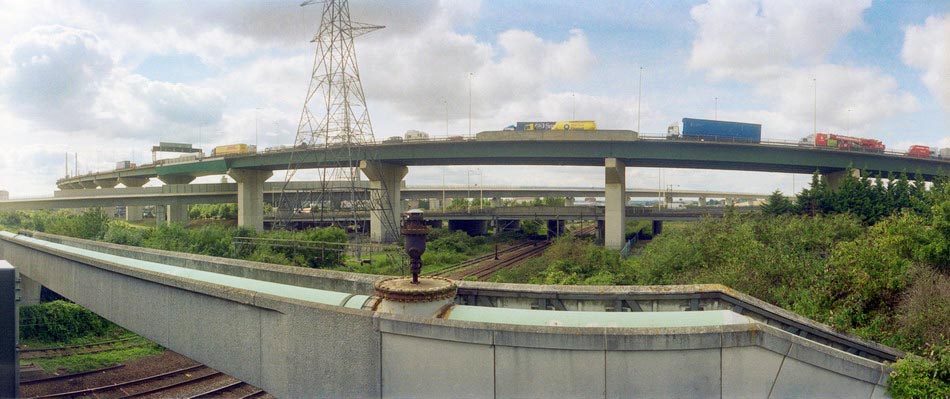I’m not a great believer in New Year resolutions, which tend to get broken in the first week or two anyway. But it’s often useful to make lists so here’s a quick one, some of which I hope will be of some interest to others. I’ll start with the one that has always been by aim.
1. Make better pictures
Pictures that matter more to me, that say what I think is worth saying. Thirty years ago I decided to take the pictures I wanted to take rather than try and make a living from photography. It led to years of hard graft teaching and doing photography in the gaps, low earnings, and not a great deal of recognition. Of course I don’t regret it. And it’s great to find other people who understand and care too, whether they write to me about my work on the web or see my work in the occasional show – such as that at Foto Arte 2007 in Brasilia, on until Jan 20.
2. get out more and take more pictures.
I got off to a good start on this one, at the New Year Parade in Westminster (which is why this blog appears on Jan 2.) More pictures from this on My London Diary. Events force you to get off your backside or you miss them. What is harder to keep doing are the longer-term projects, where its always too easy to look out of the window and decide the weather isn’t quite right, or find other reasons not to work on them today. Experience of course tells me that the best pictures often come in bad weather and the time is never perfect.
3. check my camera settings more often when taking pictures
So yesterday I decide one picture needs -1.33 stop, and find half an hour later that I’ve shot another hundred or so that didn’t want it at the same setting… Or that the whole set of pictures I shot in one very dark street all show unwanted motion blur because I didn’t increase the ISO… It’s so easy to get absorbed in the visual side of image-making and forget the technical (though many more photographs are failures for the opposite reason – technically perfect nothings.)
4. always check for dirt on the lens
Check and keep checking. Become paranoid about it. One of the best set of pictures I almost took in 2007 was ruined by a little bit of greasy dirt. It had been a huge rush and I hadn’t had time for my normal careful checks as I packed my camera bag.
5. edit my work more stringently
I’m writing this as Lightroom churns out 244 jpegs from the 800 or so pictures I took yesterday. I need to work that down into a much more sensible number for the web and libraries etc.
6. sort out a proper back-up system
After I lost a couple of days work when I first started using digital I’ve been careful to always make sure the first thing I do is to make TWO copies of every file I shoot as soon as I get back to base. But in the longer term that doesn’t really address the needs, as the volume of data is too large, and the media used have limited lifetimes.
For the longer term I need to sort out a carefully edited core of work for extended storage in some form or other. Or rather at least two forms, one preferably off-site.
7. make proper to-do lists
My preferred format for these at the moment is backs of envelopes. That may be ok for developing Government policies, but this is far more serious! I could do it on computer, (and I’ve tried it in the past) but I think it will work best as a large list on the wall of my work room.
8. really sort out my old ‘street photography’
‘Street’ is more a way of thinking and working, and I think most of what I do is street, though there are some purists who have some very funny ideas about it. But it would be nice to put some of my old work, scattered through perhaps 25 years of negatives, together.
9. publish, at least on the Internet, my Docklands work from the 1980s
Pictures of the empty and abandoned docks before the redevelopment really got going that I’ve hardly shown or printed for 20 years. This is stuff that people thought I was mad to bother with then, but I think will be of interest now.
10. get back to scanning my old work which is on deteriorating film negatives
Much of my older work can now only be printed by scanning, restoration work on the scans and then digital output. Film that has been processed and stored under ideal conditions has a decent life-time, but in the real world things are different for many of us.
11. rewrite as many as possible of my features and put them back on line
Few of the several thousand articles I wrote from 1999-2007 are still available on line. For legal and financial reasons I can’t simply republish them, but I would like to write about some of the same photographers and themes again. The problem is finding some way to generate an income that would make devoting the time to this possible.
12. make more money by selling photographs
I wish I knew how!
So my best wishes for a happy and successful 2008 for us all,
Peter




 Rogéria,
Rogéria,

















